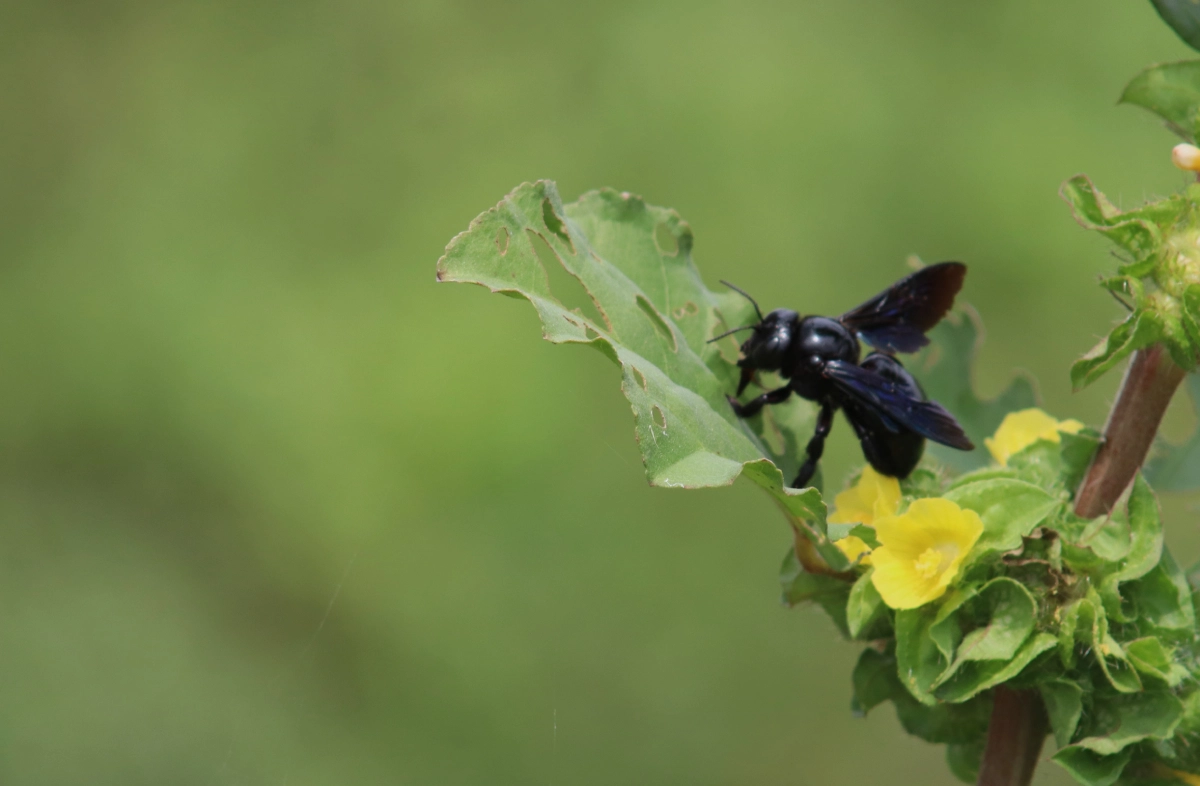
CARPENTER
BEES
Carpenter bees are large, solitary bees that resemble bumblebees but have a shiny, hairless black abdomen. Unlike honeybees or bumblebees, carpenter bees don’t live in hives. Instead, they drill into wood to lay their eggs.
Carpenter bees are very common across New Jersey from late spring through summer, especially in decks, fences, porches, sheds, garages, and barns. They can also be found in roof eaves, fascia boards, trim, and unpainted or weathered wood. They’re especially active on warm sunny days and often return to the same nesting sites each year.
If you notice multiple nesting holes, returning bees, or wood damage near your home’s structural features, you may have a carpenter bee infestation. Contact Bustabug Pest Control for assistance. Our pest control expert can treat active nests, apply effective repellents, and prevent future infestations. Contact us today to schedule an inspection.
Why Carpenter Bees Are a Problem
Carpenter bees can be a concern due to the following:
- Wood damage. Females bore holes and tunnels into wood, weakening structures over time.
- Repeated nesting. Bees often return to the same areas, expanding the damage each season.
- Stings. Carpenter bees can sting, but only the females possess a stinger and they are usually not aggressive. Male carpenter bees cannot sting. If you are stung, the pain is similar to that of a honeybee sting.
- Attracting woodpeckers. Birds peck at wood to eat bee larvae, creating even more destruction.
- Aesthetic issues. Their nesting holes leave unsightly round openings and sawdust trails.
Tips for Prevention
Keep carpenter bees off your property by following these tips:
- Paint or stain exposed wood. Unfinished, weathered wood is most attractive to carpenter bees. Use high-quality paint or wood stain with sealant to create a barrier. Focus on eaves, fascia boards, decks, railings, sheds, and fences.
- Seal holes and cracks. In fall or early spring (when bees are dormant), fill old nesting holes with wood filler or caulk. Then paint or seal the area to prevent reuse.
- Install physical barriers. Use metal flashing, vinyl wraps, or fine mesh screens on vulnerable wood surfaces. Consider soffit and fascia coverings made of non-wood materials.
- Use carpenter bee traps or decoys. Hang carpenter bee traps near problem areas to intercept bees early. Some homeowners hang fake hornet nests, since bees may avoid areas with predators.
- Create disturbances. Carpenter bees prefer quiet, undisturbed areas. Frequent movement, vibration, or noise near known nesting spots may discourage activity.
Prevention is especially important in New Jersey, where bees return year after year to the same nesting sites. Early detection helps avoid costly damage. By combining wood protection, exclusion, and early deterrence, you can greatly reduce your chances of carpenter bee infestations.
Contact Us Today
Carpenter bees can cause a lot of damage to homes. It’s important to keep them out of your home. If you can’t, then it’s time to seek professional help.When you need high-quality pest control in Sussex County or Morris County, the professionals at Bustabug Pest Control got your back. Schedule an inspection today. Give us a call at (201) 347-5943 or fill out the online form.
PEST SERVICES
TESTIMONIALS
Jonathan
One of the best companies in the area! I had a big issue in the house, and Rob was able to handle it in a timely manner. He did not mind answering all the questions My wife and I had. He answered them in professionally and respectfully manner. Very reasonable in price. I highly recommend them to anybody that’s looking to get rid of any type of Pest Control issue.